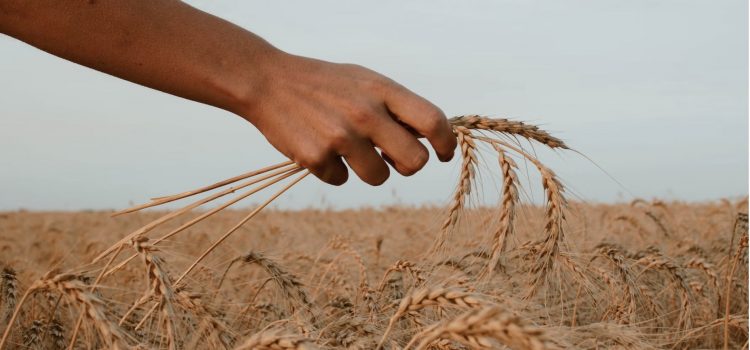
This is a free excerpt from one of Shortform’s Articles. We give you all the important information you need to know about current events and more.
Don't miss out on the whole story. Sign up for a free trial here .
What’s causing the Ukraine food crisis? Which countries are affected? What other supply chain issues are expected?
Ukraine is an important source of wheat, barley, and other foodstuffs for many poor and developing nations. However, Russian blockades have prevented exports from Ukraine from reaching the rest of the world, creating a food crisis through shortages and global price increases.
Read on to learn how the Ukraine food crisis is developing and which countries are facing shortages.
Understanding the Ukraine Food Crisis
The Ukraine food crisis was brought about by Russia’s invasion of the country which caused global food prices to skyrocket. Many developing countries have already seen protests as rising food prices made people’s living costs unmanageable. For example, the average price of wheat in Europe has risen more than 50% since the beginning of 2022.
However, higher prices are only the tip of the iceberg; without Ukraine’s grain exports, the UN predicts that over 180 million people in more than 40 countries could face food crises, meaning that there simply isn’t enough food to support the population. Impoverished African nations are being hit especially hard as the rising food prices worsen an existing food shortage brought about by drought and climate change.
How Did This Happen?
The Ukraine food crisis is worsened by the fact that Ukraine and Russia together produce around a third of the world’s wheat and barley, which they mostly export to poor and developing nations; exactly the kind of countries that would be hurt most severely by price hikes. Now, with Russian blockades closing off Ukrainian ports, a great deal of that grain is no longer reaching the rest of the world.
Russian officials also say that Western sanctions are strangling their ability to export Russian grain and fertilizer—however, Western leaders claim that the sanctions don’t apply to food exports. Whatever the case may be, Russian grain exports have dropped off alongside Ukrainian exports.
This one-two punch to the world’s food supply came at a time when it was already struggling to keep up with demand. Droughts and low-yield harvests around the world were driving up food prices even before the invasion of Ukraine, while demand climbed as countries emerged from the covid pandemic.
The G7 Finance Ministers, along with numerous global financial institutions, have condemned Russia’s war in Ukraine. An official statement from the Ministers says that the war is impacting not only food prices, but also the cost of energy and other commodities, and thereby driving up inflation all over the world. They add that such inflation puts undue stress on the global economy, which hasn’t fully recovered from the Covid pandemic and the ensuing supply chain disruptions.
In short, the war in Ukraine closed off a key avenue for foodstuffs at a time when food was already in short supply around the world.
More Supply Chain Issues on the Horizon?
Aside from the recent Ukraine food crisis, the past couple of years have been challenging for global supply chains in general. The good news is that most of these problems seem to be easing. After some pessimistic mid-year predictions, experts are now predicting a return to normality early next year. But even if they’re correct in the medium term, there are longer-term complications on the horizon. The current supply chain instability was triggered by the global pandemic response in early 2020. Factory closures, spikes in demand for medical equipment and protective gear, shelter-in-place orders, and panic buying wreaked havoc with normal patterns of supply and demand.
Due in part to the deliberate efforts of governments around the world, the post-pandemic economy bounced back quickly. This surging demand put pressure on still-reeling supply chains, leading to more shortages, higher prices, and ongoing headaches for those trying to predict future supply-and-demand patterns.
Transportation challenges complicated things further. Extreme shipping congestion in late 2021 and early 2022 saw massive queues at ports and a record percentage of goods stuck on idling ships, while truck driver shortages and strikes made it difficult to move goods over land.
Finally, the outbreak of war in Ukraine compounded existing problems and caused new ones, like the food crisis. As we explained above, blockages of key ports and overland rail shipping routes obstructed exports of wheat and sunflower oil, threatening global food supply chains. Suddenly pivoting away from Russia also proved challenging in the transportation sector, with Russians accounting for over 10% of the world’s shipping workers.
What Now?
While some supply chain shocks are hard to predict, others can be mitigated through risk assessment, supply chain diversification, and reorganization tactics like reshoring. Transparency may be the best approach: Organizations that have information about the whole supply chain, rather than only their immediate partners, may be best placed to ride out the storm.

Want to fast-track your learning? With Shortform, you’ll gain insights you won't find anywhere else .
Here's what you’ll get when you sign up for Shortform :
- Complicated ideas explained in simple and concise ways
- Smart analysis that connects what you’re reading to other key concepts
- Writing with zero fluff because we know how important your time is






